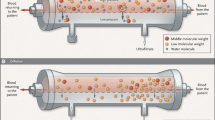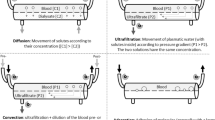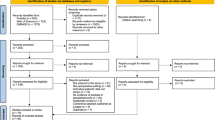Summary
In the peri-operative and post-operative course of coronary bypass operations, the diabetic patient is susceptible to complications that cause morbidity and mortality. Morbidity might best be conceptualized as the cumulative effect of the diabetic patient chronically at risk and a variety of surgically related insults, including surgical stress, anaesthesia, hypo- and hypertension, anaemia, dysrhythmias, de- or hyperhydration and cardiopulmonary bypass (CPB) that exceed the compensatory capacities of the patient. Because all these factors for adverse outcome coexist, it becomes difficult to determine which ones are most important. However, it is reasonable that, in the presence of generalized atherosclerosis affecting the aorta ascendens, carotids and the cerebral arteries, the interaction of CPB-associated embolization, hypoperfusion and inflammation may cause neurologic morbidity. Many physiologic alterations (such as non-pulsatile perfusion and hemodilution) occur during CPB and may worsen renal dysfunction in patients with diabetic nephropathy. Pulmonary dysfunctions, associated with diabetic microangiopathy, could be unmasked by atelectasis, capillary leak and other pathophysiological conditions developing after the use of extracorporeal circulation. Actually, there is evidence that with the avoidance of CBP and the use of adequate OPCAB (Off Pump Coronary Artery Bypass) techniques, by experienced teams, the incidences of neurological, renal and pulmonary complications decrease, in high-risk patients, e. g. diabetics, as well as in unselected cohorts. Because it is not possible to identify confidently those patients who are at risk for CPB-associated complications, we use a strategy where all CABG (Coronary Artery Bypass Grafting) are performed in OPCAB technique. The total OPCAB approach will in addition ascertain the development of organizational OPCAB routines and expertise. The process of re-engineering the unit towards total OPCAB needs systematic training and re-training of cardiac surgeons by surgeons, experienced in both, OPCAB surgery and knowledge transfer, according to the principles of continuing medical education (CME). Thus, the chances of the OPCAB technique improving the outcome of diabetic patients can be fully realized.
Zusammenfassung
Diabetiker sind besonders anfällig für das operative Trauma der Bypassoperation, welches neben vielen anderen iatrogenen Einwirkungen die Nebenwirkungen der Herz-Lungen-Maschine (HLM) und des kardioplegischen Herzstillstands umfasst. Die Risiken HLM-assoziierter Komplikationen sind bei Vorliegen der charakteristischen Begleit- oder Folgeerkrankungen des Diabetes, wie einer generalisierten Atherosklerose mit Befall der Aorta ascendens, den Karotiden oder intrazerebraler Gefäße, bei diabetischer Nephropathie oder pulmonalen Vorschädigungen, besonders groß. Das Vermeiden der HLM durch das OPCAB-Verfahren, ergab bessere Operationsergebnisse bei diesen Hochrisikopatienten aber auch in nichtselektierten Patientengruppen, wenn die Operationen von erfahrenen Teams ausgeführt wurden (www.ctsnet.org). Die Schwierigkeiten, die Risikokollektive zuverlässig zu bestimmen, und das Faktum, dass bestimmte Risikokonstellationen in der täglichen Praxis nicht identifiziert werden (z. B. erhält nicht jeder Patient vor der Bypassoperation ein TEE zum Ausschluss einer Atheromatose der Aorta ascendens), legen es nahe, bei allen Bypassoperationen die HLM zu vermeiden und das OPCAB-Verfahren anzuwenden. Eine solche Strategie lässt die OPCAB-Chirurgie zur täglichen Routine werden und fördert so die Ausbildung von Erfahrung und Expertise des gesamten Teams. Die Umstellung von der On-pump-Chirurgie zur Off-pump-Chirurgie bedarf eines systematischen Trainings, welches von Chirurgen durchgeführt werden sollte, die sowohl in der OPCAB-Technik als auch in CMEST (Continuing medical Education of Surgical techniques) geübt sind.
Similar content being viewed by others
References
Affleck DG, Barner HB, Bailey MS, Perry LA, Maniar H, Prasad SM, Damiano RJ Jr (2004) Flow dynamics of the internal thoracic and radial artery T-graft. Ann Thorac Surg 78(4):1290–1294
Albert A, Beller C, Walter J, Arnrich B, Rosendahl U, Priss H, Ennker J (2003) Preoperative high leukocyte count: a novel risk factor for stroke after cardiac surgery. Ann Thorac Surg 75:1550–1557
Albert A, Peck EA, Wouters P, Hemelrijck JV, Bert C, Sergeant P (2005) Performance analysis of interactive multimodal CME re-training on OPCAB attitude and application. J Thorac Cardiovasc Surg (in press)
Albert C, Beller B, Arnrich J, Walter U, Rosendahl A, Hetzel H, Priss J, Ennker J (2002) Is there any impact of the type of aortic end-hole cannula on stroke occurrence? Clinical evaluation of straight and bent-tip aortic cannulae. Perfusion 17;6:451–456
Ascione R, Lloyd CT, Underwood MJ, Gomes WJ, Angelini GD (1999) On-pump versus off-pump coronary revascularization: evaluation of renal function. Ann Thorac Surg 68(2):493–498
Ascione R, Nason G, Al-Ruzzeh S, Ko C, Ciulli F, Angelini GD (2001) Coronary revascularization with or without cardiopulmonary bypass in patients with preoperative nondialysis-dependent renal insufficiency. Ann Thorac Surg 72(6):2020–2025
Butterworth JF, Prielipp RC (2000) Endocrine, metabolic, and electrolyte responses In: Gravlee GP, Davis RF, Kurusz M, Utley JR (eds) Cardiopulmonary bypass. principles and practice, 2nd edn, Lippincott Williams & Wilkins, Philadelphia, pp 342–367
Caplan LR, Hennerici M (1998) Impaired clearance of emboli (washout) is an important link between hypoperfusion, embolism, and ischemic stroke. Arch Neurol 55(11):1475–1482. Review
Cheng DC, Bainbridge D, Martin JE, Novick RJ (2005) Evidence-Based Perioperative Clinical Outcomes Research Group. Does off-pump coronary artery bypass reduce mortality, morbidity, and resource utilization when compared with conventional coronary artery bypass? A meta-analysis of randomized trials. Anesthesiology 102(1):188–203
Clark RE, Estes F (1996) Cognitive task analysis for training. Int J Educ res 25:403–417
Cook DJ (2000) Neurologic effects. In: Gravlee GP, Davis RF, Kurusz M, Utley JR (eds) Cardiopulmonary bypass. principles and practice, 2nd edn, Lippincott Williams & Wilkins, Philadelphia, pp 403–433
Diegeler A, Hirsch R, Schneider F, Schilling LO, Falk V, Rauch T, Mohr FW (2000) Neuromonitoring and neurocognitive outcome in off-pump versus conventional coronary bypass operation. Ann Thorac Surg 69(4):1162–6
Hornick P, Taylor KM (2000) Immune response and inflammatory responses after cardiopulmonary bypass. In: Gravlee GP, Davis RF, Kurusz M, Utley JR (eds) Cardiopulmonary bypass. principles and practice, 2nd edn, Lippincott Williams & Wilkins, Philadelphia, pp 303–320
Kapetanakis EI, Stamou SC, Dullum MK, Hill PC, Haile E, Boyce SW, Bafi AS, Petro KR, Corso PJ (2004) The impact of aortic manipulation on neurologic outcomes after coronary artery bypass surgery: a risk-adjusted study. Ann Thorac Surg 78(5):1564–1571
Kouchoukos NT, Blackstonse EH, Doty DB, Hanley FL, Karp RB (2003) Ischemic heart disease. Stenotic atherosclerotic coronary artery disease. In: Kirklin/Barrret-Boyes Cardiac surgery: morphology, diagnostic criteria, natural history, techniques, results, and indications, 2nd edn, Churchill Livingstone, Philadelphia, pp 353–435
Larmann J, Theilmeier G (2004) Inflammatory response to cardiac surgery: cardiopulmonary bypass versus non-cardiopulmonary bypass surgery. Best Pract Res Clin Anaesthesiol 18(3):425–438. Review
Lee JD, Lee SJ, Tsushima WT, Yamauchi H, Lau WT, Popper J, Stein A, Johnson D, Lee D, Petrovitch H, Dang CR (2003) Benefits of off-pump bypass on neurologic and clinical morbidity: a prospective randomized trial. Ann Thorac Surg 76(1):18–25
Lev-Ran O, Braunstein R, Sharony R, Kramer A, Paz Y, Mohr R, Uretzky G (2005) No-touch aorta off-pump coronary surgery: the effect on stroke. J Thorac Cardiovasc Surg. Feb 129(2):307–313
Magee MJ, Coombs LP, Peterson ED, Mack MJ (2003) Patient selection and current practice strategy for off-pump coronary artery bypass surgery. Circulation 9;108 Suppl 1:II9–14
Magilligan DJ Jr, Eastland MW, Lell WA, DeWeese JA, Mahoney EB (1972) Decreased carotid flow with ascending aortic cannulation. Circulation 45(Suppl 1):I130–133
Paparella D, Brister SJ, Buchanan MR (2004) Coagulation disorders of cardiopulmonary bypass: a review. Intensive Care Med 30(10):1873–1881
Puskas JD, Williams WH, Duke PG, Staples JR, Glas KE, Marshall JJ, Leimbach M, Huber P, Garas S, Sammons BH, McCall SA, Petersen RJ, Bailey DE, Chu H, Mahoney EM, Weintraub WS, Guyton RA (2003) Off-pump coronary artery bypass grafting provides complete revascularization with reduced myocardial injury, transfusion requirements, and length of stay: a prospective randomized comparison of two hundred unselected patients undergoing off-pump versus conventional coronary artery bypass grafting J Thorac Cardiovasc Surg 125(4):797–808
Puskas JD, Williams WH, Mahoney EM, Huber PR, Block PC, Duke PG, Staples JR, Glas KE, Marshall JJ, Leimbach ME, McCall SA, Petersen RJ, Bailey DE, Weintraub WS, Guyton RA (2004) Off-pump vs conventional coronary artery bypass grafting: early and 1-year graft patency, cost, and quality-of-life outcomes: a randomized trial JAMA 291(15):1841–1849
Reston JT, Tregear SJ, Turkelson CM (2003) Related Meta-analysis of short-term and mid-term outcomes following off-pump coronary artery bypass grafting. Ann Thorac Surg 76(5):1510–1515. Review
Rubens FD, Mesana T (2004) The inflammatory response to cardiopulmonary bypass: a therapeutic overview Perfusion 19 Suppl 1:S5–12. Review
Sabik JF, Gillinov AM, Blackstone EH, Vacha C, Houghtaling PL, Navia J, Smedira NG, McCarthy PM, Cosgrove DM, Lytle BW (2002) Does off-pump coronary surgery reduce morbidity and mortality? J Thorac Cardiovasc Surg 124(4):698–707
Sergeant P, Blackstone E, Meyns B (1997) Validation and interdependence with patient-variables of the influence of procedural variables on early and late survival after CABG. K.U. Leuven Coronary Surgery Program. Eur J Cardiothorac Surg 12(1):1–19
Sergeant P, de Worm E, Meyns B, Wouters P (2001) The challenge of departmental quality control in the reengineering towards off-pump coronary artery bypass grafting. Eur J Cardiothorac Surg 20(3):538–543
Sergeant P, Wouters P, Meyns B, Bert C, Van Hemelrijck J, Bogaerts C, Sergeant G, Slabbaert K (2004) OPCAB versus early mortality and morbidity: an issue between clinical relevance and statistical significance. Eur J Cardiothorac Surg 25(5):779–785
Sharony R, Grossi EA, Saunders PC, Galloway AC, Applebaum R, Ribakove GH, Culliford AT, Kanchuger M, Kronzon I, Colvin SB (2004) Propensity case-matched analysis of off-pump coronary artery bypass grafting in patients with atheromatous aortic disease. J Thorac Cardiovasc Surg 127(2):406–413
Srinivasan AK, Grayson AD, Fabri BM (2004) On-pump versus off-pump coronary artery bypass grafting in diabetic patients: a propensity score analysis. Ann Thorac Surg 78(5):1604–1609
Stamou SC, Jablonski KA, Hill PC, Bafi AS, Boyce SW, Corso PJ (2005) Coronary revascularization without cardiopulmonary bypass versus the conventional approach in high-risk patients. Ann Thorac Surg 79(2):552–557
Wendler O, Hennen B, Demertzis S, Markwirth T, Tscholl D, Lausberg H, Huang Q, Dubener LF, Langer F, Schafers HJ (2000) Complete arterial revascularization in multivessel coronary artery disease with 2 conduits (skeletonized grafts and T grafts). Circulation 102(19 Suppl 3):III79–83
Zamvar V, Williams D, Hall J, Payne N, Cann C, Young K, Karthikeyan S, Dunne J (2002) Assessment of neurocognitive impairment after off-pump and on-pump techniques for coronary artery bypass graft surgery: prospective randomised controlled trial. BMJ 325(7375):1268
Author information
Authors and Affiliations
Rights and permissions
About this article
Cite this article
Albert, A., Ennker, J. & Sergeant, P. Bypassoperationen bei Diabetikern—. Clin Res Cardiol 95 (Suppl 1), i40–i47 (2006). https://doi.org/10.1007/s00392-006-1109-9
Issue Date:
DOI: https://doi.org/10.1007/s00392-006-1109-9




